
Amid a tide of development, can Philadelphia’s Graffiti Pier be preserved?
| May 13, 2024
Update: Partial Collapse of Graffiti Pier Leaves Future Park Plans in Limbo
Tucked away in the Polish neighborhood of Port Richmond, on the other side of the I-95 divide, Graffiti Pier juts out into the wide expanse of the Delaware River.
A haven for graffiti artists and an urban explorer’s dream, the pier’s concrete pillars and crumbled walls are caked in spray paint and its floors are lush with blossoming green ferns and trees.
Nature has reclaimed it.
The pier is a jungle gym of vibrant murals spilling over one another in glowing contrast between the art of man and nature. It is a standalone wonder of the beautiful side of infrastructure decay and a lesson about injecting life and value into a place left to rot.
The art is expansive, boundless and constantly changing. It explodes with wild colors and covers nearly every inch of concrete at the pier. It seeps onto nearby trees and surrounding rocks and boulders.
Artists’ tags are impossible to miss — some tricolored and intricate, others done in a hurry and skinny. Murals, phrases and quotes are sprinkled about. There is no one set genre of graffiti art at Graffiti Pier.
Regardless of what is painted, it will inevitably get lost behind new works of art.
But will this hidden gem survive burgeoning commercial redevelopment up and down Philadelphia’s waterfront? As far as the Delaware River Waterfront Corporation is concerned, that’s precisely the plan.
Founded in 2009, the Delaware River Waterfront Corporation is a non-profit dedicated to river stewardship and funding revitalization projects in association with city government along Philadelphia’s section of the Delaware River.
There has been exponential development already because of the Delaware River Waterfront Corporation’s involvement — Race Street Pier, Cherry Street Pier, the waterfront river trail, Spruce Harbor Park, and now the I-95 capping project and Penn’s Landing redevelopment, which are all corporation projects that are dramatically morphing the concrete banks of Philadelphia’s waterfront landscape.
On the other hand, Graffiti Pier hasn’t seen mass change in decades.
Once spurned, now embraced
According to Atlas Obscura, a wiki for abandoned, unknown and hidden places, it was built in 1925 as a coal-loading dock to transport anthracite coal up and down the Delaware River and beyond.
Formally known as Pier 18, it was in operation for 68 years before it was shut down by Conrail (formerly Consolidated Rail Corporation) in 1993. Soon after, people began flocking to the abandoned pier to blanket graffiti on the canvas of concrete pillars up and down the dock, which once supported elevated rail lines used to transfer coal from train cars to ships.
Several unsuccessful attempts — from the Anti-Graffiti Network to law enforcement — were made over the years to curtail graffiti.
But in the city that gave birth to modern graffiti, artists were undeterred.
The Anti-Graffiti Network, a program whose goal it was to remove graffiti across the city in the ’80s, became MuralArts and law enforcement of trespassing faded away after the Delaware River Waterfront Corporation got involved.
In 2019, the corporation entered a memorandum of understanding to buy six acres of waterfront from Conrail for revitalization.
The entire property is more than 150 acres and has an assessed value of $14 million, according to the city-run website, Philadelphia Atlas.
The corporation hopes to begin work on the pier as soon as possible after receiving a $2 million federal grant in 2023, but negotiations are still underway with Conrail.
A concept plan was created with the help of community members and frequenters of the pier, all with a completion date of 2024. But entering this year, Delaware River Waterfront Corporation still has yet to begin renovations — or officially purchase the land.
“We’re still working on acquiring the property,” said Karen Thompson, the director of planning, policy and engagement at the corporation. “A big part of the delay was Covid. It’s just a slow process for this kind of thing, just a slow negotiation.”
Questions of preservation and public access
The renovations in question would include fences along the edges of the pier and on top of the concrete trestle pillars, make trails wider and ADA-accessible, place benches and add new walls for pier-goers to create more art.
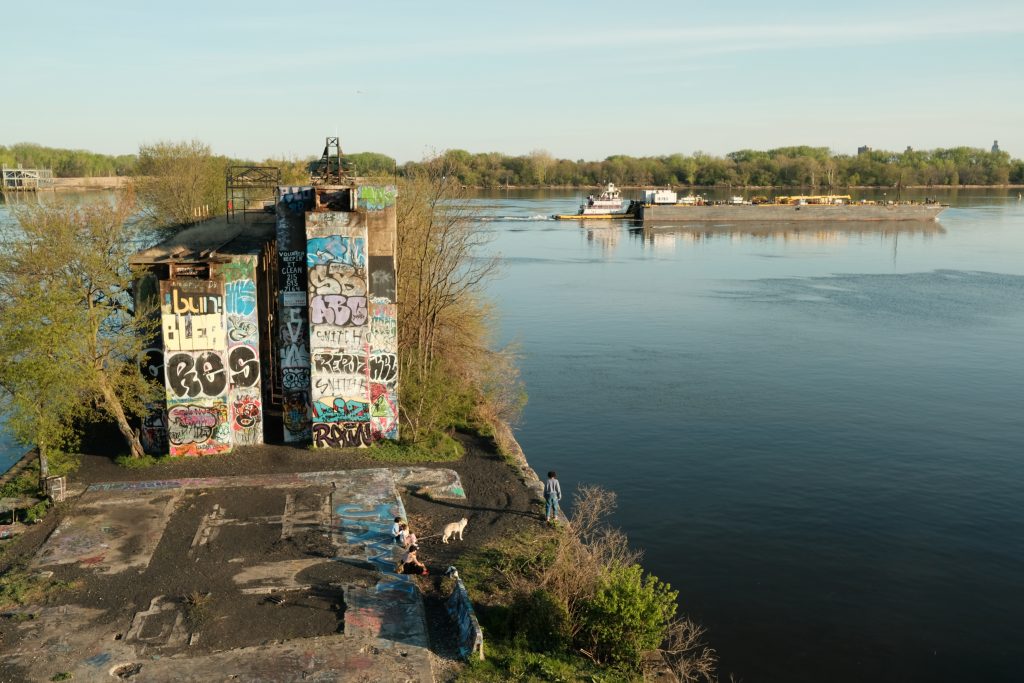
Whether the Delaware River Waterfront Corporation should even step in is a question raised by many.
As Thompson sees it, by purchasing Graffiti Pier and making improvements, the corporation is preventing Conrail from coming in and razing the pier. She, along with many frequenters of the site, fear the destruction of the pier.
It already was shut down at least once, in 2018, following a rise in crime.
“Well, for one, making it a public space and allowing public access, or even leaving it alone is not something Conrail is interested in,” Thompson said. “They’re a railroad company, so let us formalize it as a public space and protect that resource, because again, that’s not what Conrail does.”
The destruction of Pennsylvania’s graffiti-covered, abandoned spaces has already been an issue in recent years. In 2020, Graffiti Highway was entombed in layers of dirt by the coal company that owned the property.
Located in the lonely, mine-scarred woods of Centralia, 100 miles northwest of Philadelphia, Graffiti Highway was frequented by graffiti artists and explorers until its burial.
But Thompson does not want to see the same thing happen in Philadelphia.
“If they buy it, they shouldn’t touch it,” said Lyric, who has been a visitor to the pier since childhood. “They have to leave it how it is.”

Lyric wants the pier to be kept the same way they’ve always known it. They used to fish at the pier with their father for years, but today, Lyric and their partner bask in the warm spring sun, hanging out on a makeshift swing held up by chains tied around a graffitied concrete beam.
Their biggest worry is that formalizing the park as a public space could negatively impact the people already using it.
“Are they gonna kick out the homeless people that stay here? Companies could say they’re going to do something, and then something completely different happens,” Lyric said. “It’s pretty as is. And it’s public enough already, if you don’t know about it, that’s on you.”
Thompson doesn’t disagree but added that safety is also a concern.
“It is a pretty great site as it is. So, let’s leave it as untouched as possible or feel as untouched as possible while making it actually safe,” she said. “You know there’s some sinkholes. There’s true safety issues there. It’s not ADA accessible, so let’s make it accessible. Let’s make it safe without making it look safe and accessible all while keeping that grit, and keep it a place for artistic expression.”
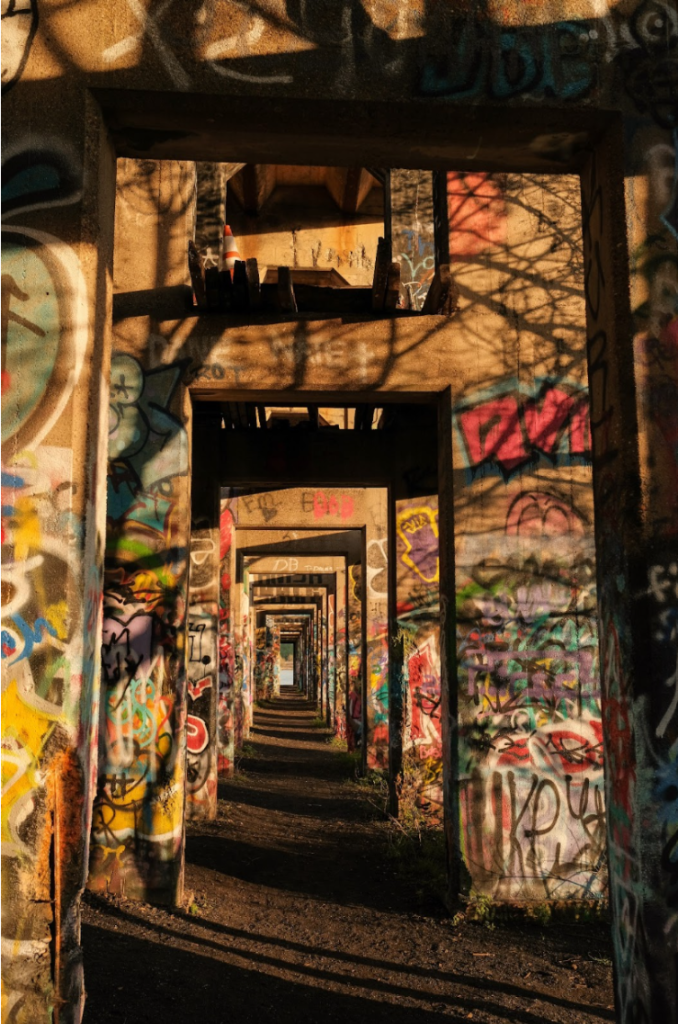
Improvements would protect the pier
Environmentally, the Delaware River Waterfront Corporation plans to plant marshes to mitigate water inundation from affecting the pier, as well as native plants and trees along the pier and surrounding area.
New art walls would also act as a preventative measure against rising sea levels, as well as real estate for graffiti artists looking for new space.
Thompson said another goal is to reconnect Graffiti Pier to the surrounding community, as well as the other riverfront features farther downstream by extending the Delaware River Trail, a 3.3-mile long biking and walking path.
It snakes up the riverfront from South Philadelphia to Penn Treaty Park, just a mile south of Graffiti Pier.
Future plans, if fleshed out, will have the Delaware River Trail breeze right past the pier.
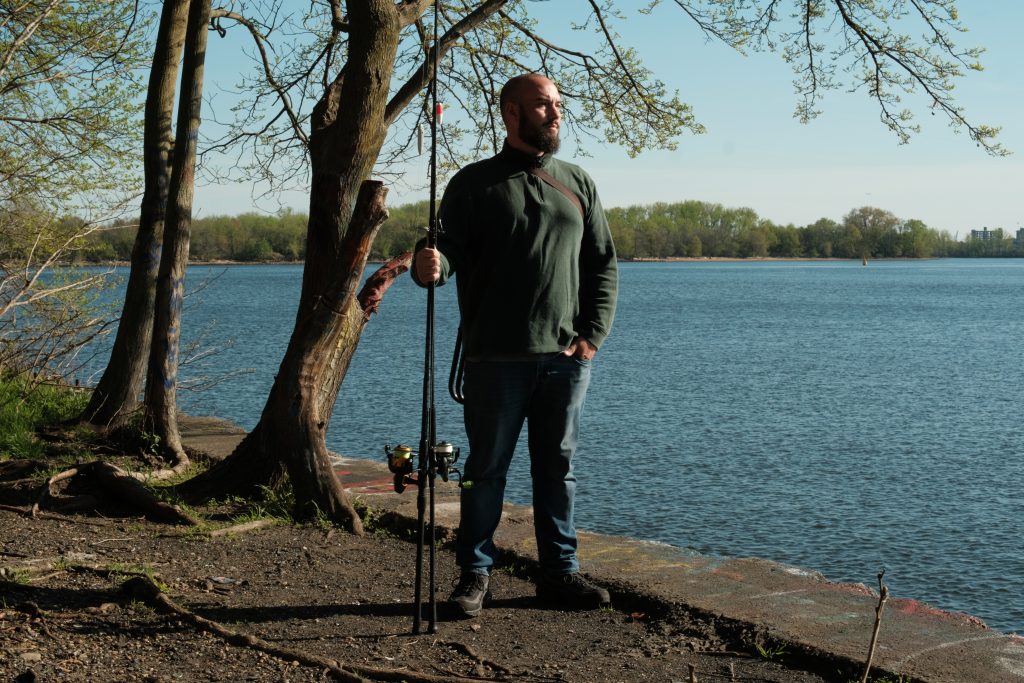
Philadelphians also head to the pier to fish. The small, cavernous underwater gaps beneath the pier are home to catfish, blue gill, perch and bass. When the tide is low enough, they bite.
Further, the immediate access to the river and ability to cast into the water at any point, without having to deal with fences or barriers, are what makes the pier so appealing to Philadelphians looking to escape the city and go fishing.
“It’s good fishing here… Not today though,” said Nestor Gomez, a native Philadelphian, as he dumped a lump of liver and chicken scratch into the murky pier water below — lunch for the fish uninterested in his line.
Like many others, Nestor uses the pier as an escape from the draining pace of the city.
“Actually, this is my kids’ spot — this is their place,” he said. “But just from this spot here I’ve caught a lot of fish. Striped bass with massive bellies and shiny scales and real big catfish that lurk down in the darkness.”
The Delaware River Waterfront Corporation plans to create new marshes and environmentally develop the area would create a greater ecosystem for existing species to thrive and for new ones to move in.

The pier is a place of refuge
“Graffiti Pier is an incredible place and holds the gallery walls for a lot of graffiti writers and visual artists,” said Jan Cera, a Milwaukee-based artist who has created work across the country, including Graffiti Pier. “I was lucky to be able to create some work there and I think about the space often.”
Cera’s work from 2015 has since been covered by layers upon layers of spray paint by new artists using Graffiti Pier’s concrete pillars and walls as their canvas.

Regardless, growing crowds are expected at Graffiti Pier as summer nears and the pier once again becomes an escape from the simmering gridded streets of busy Philadelphia.
Just like most Philadelphians, Thompson and the Delaware River Waterfront Corporation have a soft spot for places like this and want to see it preserved.
“It’s kind of all things Philly,” Thompson said. “It was this working waterfront industry, then changed with the times and street art rose up. It’s just a little microcosm of Philly history that I think is just so cool and worth saving. It’s ecological, it’s art, it’s industry. Graffiti Pier is all of those things and I think that’s what makes it so incredibly unique.”
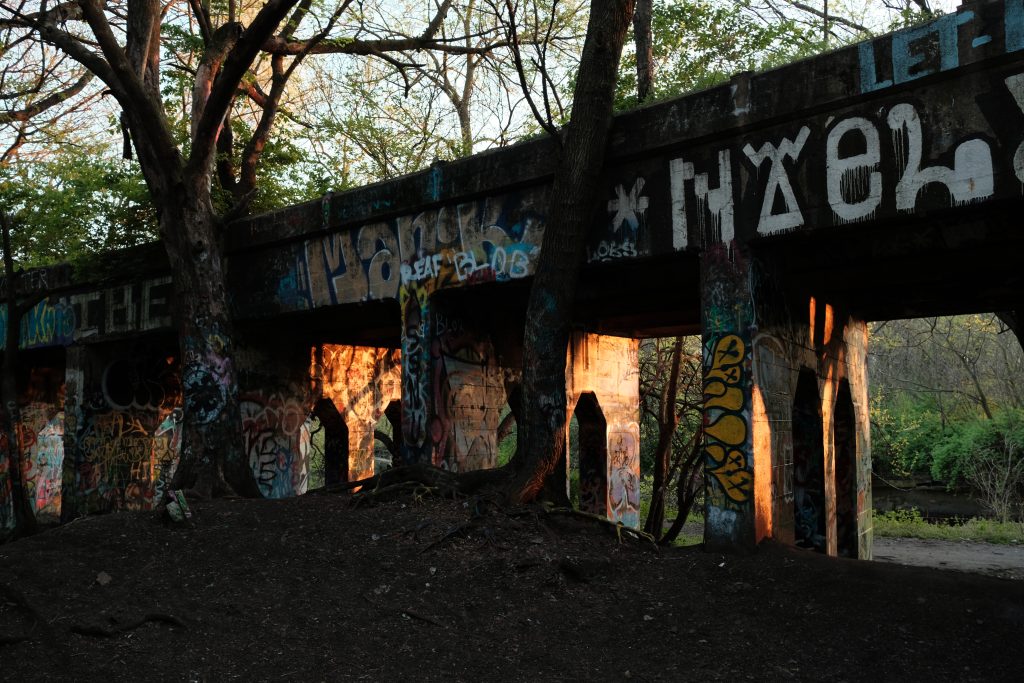



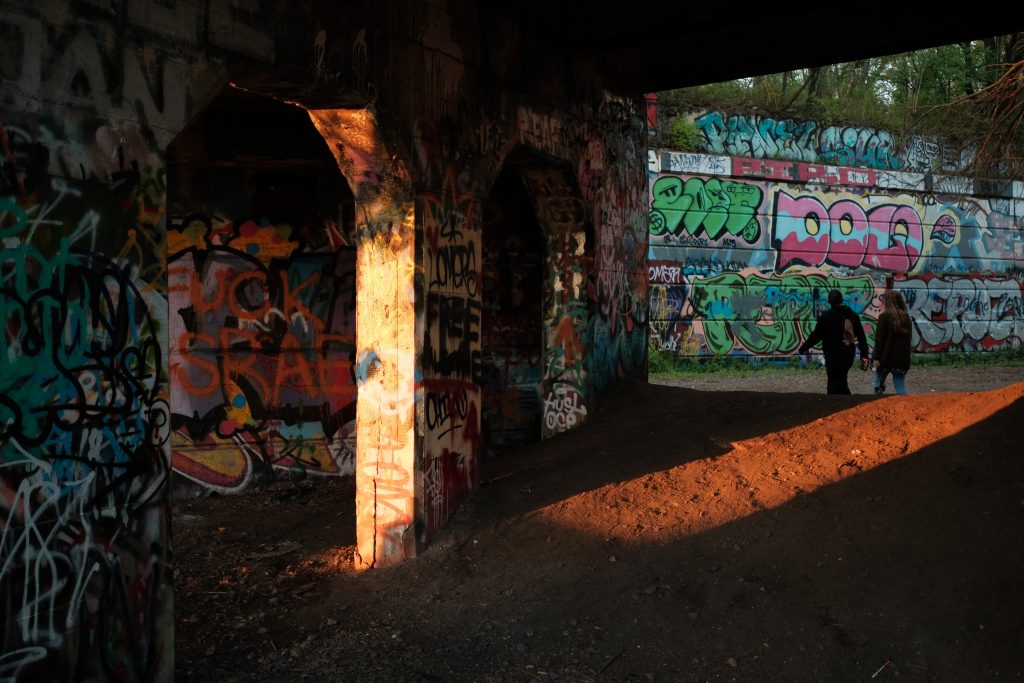








Great article Adam.
Great read.
Really, other than some barrier free access, filling the sink holes and stabilizing the structure, and the wetlands restoration, the best thing is to do *nothing* and just monitor the place.
’m a nerdy white guy in his late 50s. I’ve never felt unsafe there.
The pier is a remarkably self-regulating place.
The people who make pictures there look after the pier, cleaning up trash themselves.
It’s cleaner than most Philadelphia streets!
It’s a like a large scale version of Zagar’s Magic Garden: a special place that’s uniquely Philadelphia. Don’t f**k it up.
Nice read 📚, hoping for the best.
Leave it alone I’ve been going to the piers since I was a kid , dirty lil kenzo jumping in the del! Fishing! Putting pieces! Up! And also candles for my man Sweeney!!! A lil up there trails !